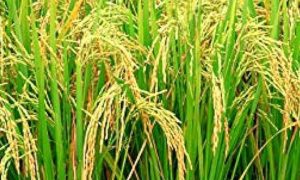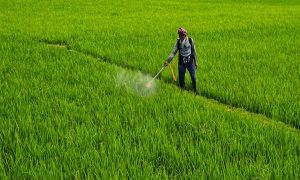Mangaluru: Scientists to study paddy preserved by ‘Seeding Sathya’

ICAR-KVK Dakshina Kannada is studying 10 traditional paddy varieties preserved by Padma Shri awardee Sathyanarayana Beleri. These include saltwater-tolerant Kari Kagga, pest-resistant Tavala Kannan, and medicinal varieties like Raktashali and Kalame. The aim is to identify high-performing varieties suitable for the coastal region and integrate them into the seed and food chain, benefiting farmers and consumers.
Mangaluru: The ICAR-Krishi Vigyan Kendra (KVK) in Dakshina Kannada has initiated a study on traditional paddy varieties preserved by Padma Shri awardee Sathyanarayana Beleri, also known as ‘Seeding Sathya’. Beleri, a passionate rice farmer from Nettanige in Kasaragod, conserved over 650 indigenous rice varieties. Mallikarjuna L, soil science scientist at ICAR-KVK, told TOI that 10 traditional rice varieties with medicinal and aromatic properties were obtained from Beleri.
These varieties are being scientifically studied and tested in KVK’s experimental plots to identify the most suitable ones for the coastal region, which could benefit the farming community.KVK aims to introduce the high-performing varieties into the seed chain, followed by the food chain, ensuring their availability to both farmers and consumers, he said. The sowing of paddy seeds for these 10 varieties began on July 3, and transplantation to the main field took place on July 24.
The traditional rice varieties being studied by include Kari Kagga, a saltwater-tolerant and rot-resistant variety native to Karnataka – that is high in protein and suitable for boiled rice, and Tavala Kannan, a pest-resistant, high-protein variety from Kerala. Other varieties included Nereguli, which was suitable for low-lying areas in Karnataka, and Jugal, a unique variety from West Bengal that had two grains within a single paddy seed. Kalame, native to Karnataka, thrives in alkaline coastal areas and is believed to have medicinal properties for curing piles and fistula. Bara Nellu, another Karnataka variety, is known for its drought-resistant properties, while Navara, a short-duration variety from Kerala, had brown seed coats and medicinal qualities. Raja Kayame, a tall variety from Karnataka with a long crop duration of 180 days, is recognized for its good cooking quality despite lower yields.
Raktashali, a red rice variety from Kerala, is reputed for its medicinal properties, particularly in curing anaemia, and Gandha Sale, an aromatic variety from Kerala, completes the list of traditional varieties under study. In addition to these traditional varieties, KVK Dakshina Kannada also cultivated rice varieties for seed production, including Sahyadri Panchmukhi (IRGA 9-2B), a high-yielding, flood-resistant variety developed by the Keladi Shivappa Nayaka University of Agricultural and Horticultural Sciences (KSNUAHS) in Shivamogga. This variety is resistant to blast and brown spot disease, and gall midge. Another variety being cultivated is Sahyadri Kempumukti, also from KSNUAHS, known for its high yield and resistance to blast disease, leaf folder, stem borer, and corid bug.
Additionally, Sahyadri Brahma (BMRMS-1-2-1), a red rice variety released in 2021 by KSNUAHS, is suited for midland areas in Zone 10 (Coastal Karnataka) during the Kharif season. This dwarf variety has medium-bold grains and matured within 130-135 days. “The study aimed to preserve and revive these varieties, providing sustainable options for the farmers of the region,” he said.














